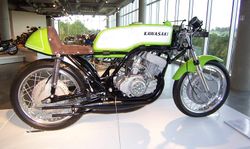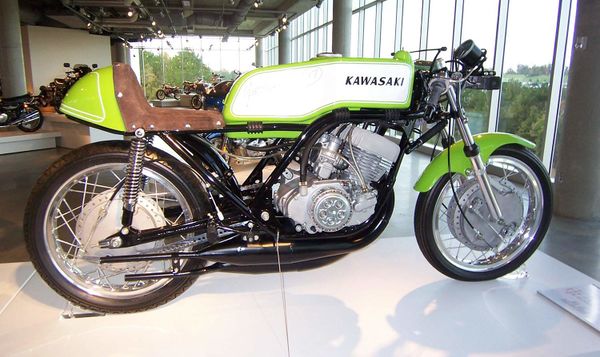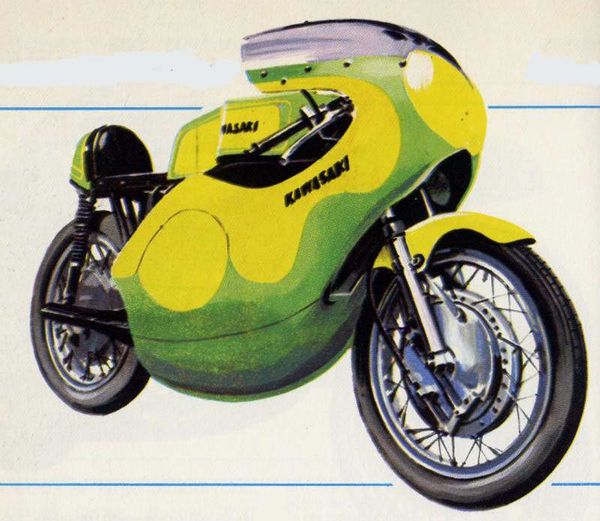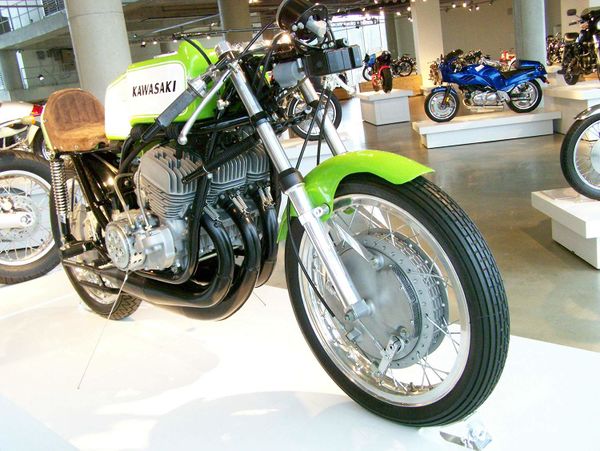Kawasaki 500 H1RA
 |
|
| Racing Bikes Kawasaki 500 H1RA | |
| Class | Racing |
|---|---|
| Weight | |
| Recommended Oil | K-tech 10W-40 |
| Manuals | Service Manual |
Photos[edit | edit source]
Overview[edit | edit source]
Kawasaki 500 H1RA
There was word from Japan in the spring of 1969 that Kawasaki
had come up with something really new. Except for Dave Simmonds' 125 racer,
Kawasaki was better known for its fighter planes than for anything else.
The new product was a two-stroke three-cylinder 500-cc.
motorcycle, designed not for world championship racing but for the roads of the
world, although its standard engine had 60 h.p. and an acceleration time from 0
to 60 m.p.h. of just over three seconds. The Kawasaki three-cylinder was an
immediate commercial success, and the company decided to develop a Grand Prix
version.
There were a lot of Kawasakis at the starting line in 1970 world championship
racing in the 500-cc. class. Ginger Molloy, the New Zealand racer, rode one to
second place in the championship, behind Agostini.
Kawasaki brought out an improved model in 1971 with better
chassis and brakes. Simmonds rode it to one first place, one second, and two
thirds in the world championship, but in other races it was always outdistanced
by the Suzuki Titan Daytona two-cylinder.
The last successful year for the Kawasaki 500 was 1972, the year Simmonds got a
second place at the Spanish Grand Prix.
Motorcycle: Kawasaki 500 H1RA Manufacturer: Kawasaki
Industries Ltd.,
Tokyo Type: Racing Year: 1972
Engine: Kawasaki three-cylinder, two-stroke, with cross-port distribution.
Displacement 498.7 cc. (60 mm. x 58.8 mm.)
Cooling: Air
Transmission: Five-speed block
Power: Over 75 h.p. at 9,000 r.p.m.
Maximum speed: Over 160 m.p.h.
Chassis: Double cradle, continuous, tubular. Front and rear, telescopic
suspension
Brakes: Front, central drum, four shoes, four-cam; rear, central drum, double
cam


